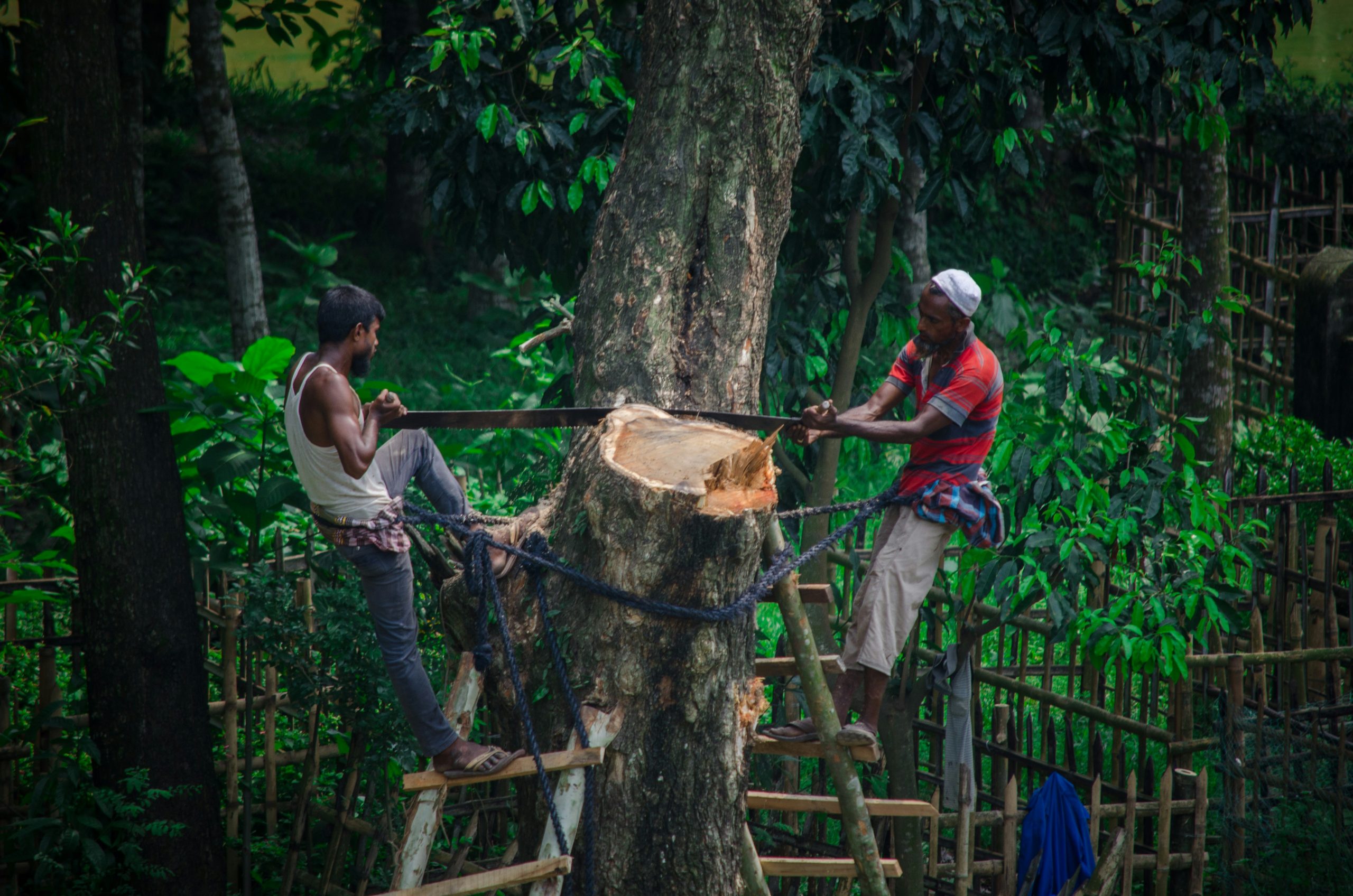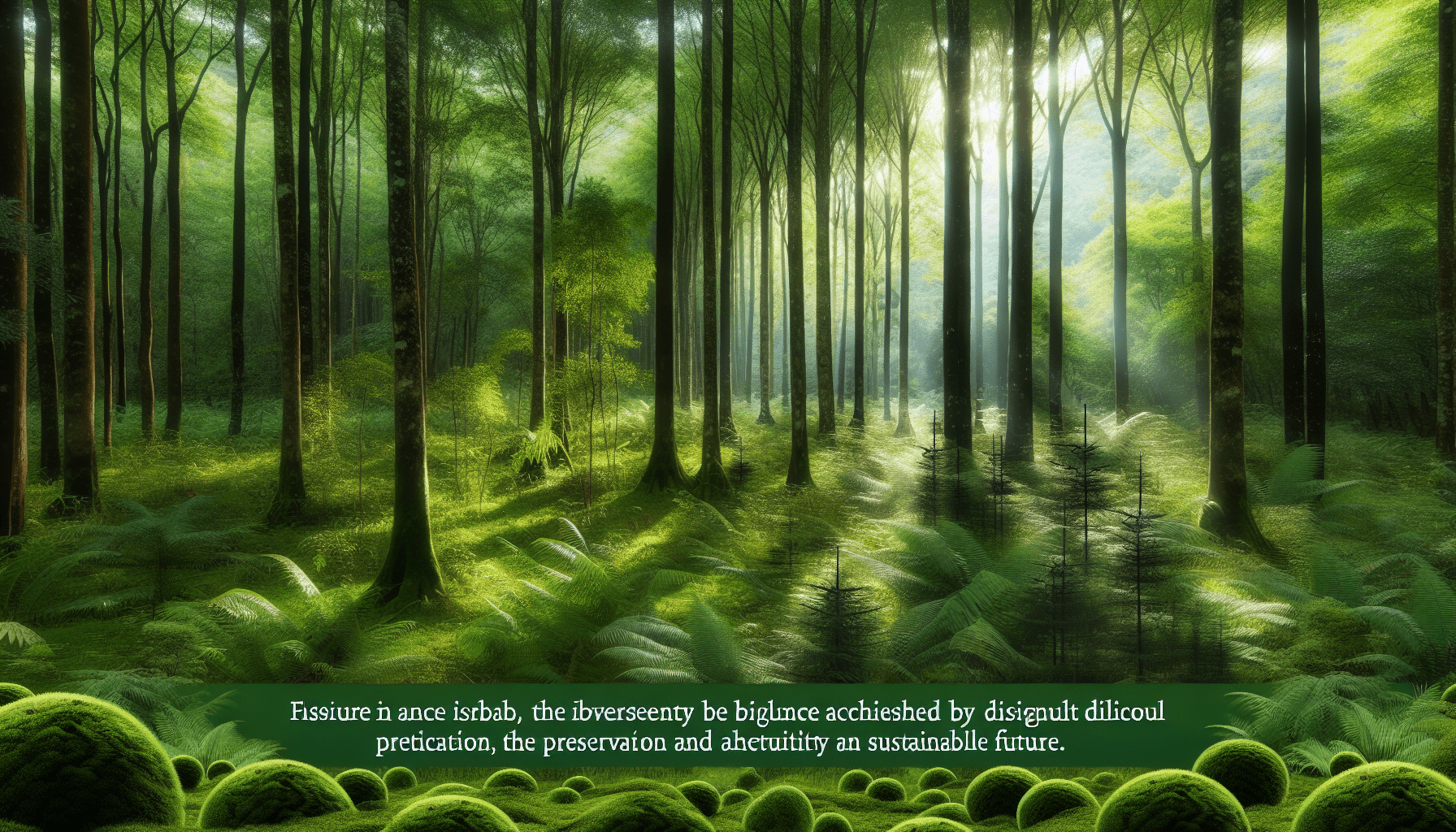In “What Are The Best Practices For Sustainable Forestry?”, we explore the essential strategies that ensure our forests remain healthy and productive for generations to come. Sustainable forestry isn’t just about maintaining tree populations; it’s about fostering a balanced ecosystem that includes wildlife, water quality, and soil health. By embracing practices such as selective logging, reforestation, and biodiversity conservation, we can protect these invaluable natural resources. Join us as we dive into the best methods to promote sustainability in our forests and secure a greener future for everyone. Have you ever wondered what the best practices for sustainable forestry are?
As stewards of the Earth, it’s our collective responsibility to ensure that our forests remain healthy and viable for future generations. Sustainable forestry seeks to balance our need for resources with the preservation of the ecosystems these forests support. This doesn’t simply mean planting trees but encompasses a range of strategies involving careful planning, management, and cooperation among various stakeholders.
Understanding Sustainable Forestry
Sustainable forestry is about managing forest resources to meet present needs without compromising the ability of future generations to meet their needs. It involves maintaining forests’ biodiversity, productivity, regeneration capacity, and vitality while also allowing for the diverse social, economic, and environmental needs of society.
Why Sustainable Forestry Matters
Forests are essential for the planet. They sequester carbon, provide clean air and water, regulate the climate, and serve as habitats for countless species. In addition, forests also provide timber and other products vital for economies around the globe. Mismanagement, deforestation, and other unsustainable practices threaten these benefits, making sustainable forestry crucial.
Key Principles of Sustainable Forestry
To practice sustainable forestry effectively, we must adhere to key principles designed to support both ecological stability and human needs.
1. Ecosystem Health and Biodiversity
Maintaining the health of forest ecosystems is essential. This includes protecting various species and their habitats, ensuring soil fertility and water quality, and managing pest and disease outbreaks.
2. Social Responsibility and Community Involvement
Sustainable forestry should involve local communities and indigenous peoples who rely on forests for their livelihoods. It includes respecting their rights, knowledge, and traditions, and ensuring they have a role in decision-making processes.
3. Economic Viability
Forest management needs to be economically viable to incentivize sustainable practices. This principle ensures that forestry can be conducted as a business while aligning with ecological and social responsibilities.
4. Intergenerational Equity
We need to consider the long-term impact of our actions today. Sustainable forestry practices aim to ensure that future generations enjoy the same, if not better, forest resources and health.

Best Practices for Sustainable Forestry
1. Forest Management Planning
Effective forest management planning involves developing, maintaining, and implementing a forest management plan that meets sustainable forestry criteria.
Plans should outline objectives, management actions, monitoring procedures, and timelines. It also involves assessing forest conditions, engaging stakeholders, and incorporating scientific research.
2. Certification Programs
Certification programs like the Forest Stewardship Council (FSC) and Sustainable Forestry Initiative (SFI) help ensure that forestry practices meet specific sustainability criteria. They provide frameworks for forest management and supply chain traceability, benefiting companies and consumers committed to responsible sourcing.
| Certification Body | Key Features |
|---|---|
| Forest Stewardship Council (FSC) | Promotes environmentally appropriate, socially beneficial, and economically viable management of forests. |
| Sustainable Forestry Initiative (SFI) | Focuses on the sustainability of North American forests with standards for forest management, fiber sourcing, and chain of custody. |
3. Selective Logging and Reduced Impact Logging (RIL)
Selective logging involves carefully choosing which trees to harvest to minimize ecological disruption. RIL techniques reduce the damage to remaining trees and soil, maintaining overall forest structure and reducing carbon emissions.
4. Reforestation and Afforestation
Reforestation involves replanting trees in deforested areas, while afforestation refers to planting trees in areas that were not previously forested. Both practices help restore habitat, sequester carbon, and support biodiversity.
5. Agroforestry
Agroforestry integrates trees and shrubs into agricultural landscapes, combining forestry and farming. This practice enhances biodiversity, improves soil health, and provides farmers with additional sources of income.
6. Adaptive Management
Adaptive management is a dynamic approach that adjusts forest management practices based on monitoring results and new scientific knowledge. This ensures that management strategies remain effective and responsive to changing conditions.
7. Protecting Water Resources
Healthy forests are vital for water purification, regulation, and storage. Sustainable forestry practices should prioritize protecting watersheds and maintaining buffer zones around streams and rivers to prevent erosion and water contamination.
Challenges in Implementing Sustainable Forestry
While sustainable forestry practices provide a framework for responsible management, various challenges can impede their implementation.
1. Economic Pressures
Short-term economic gains often drive deforestation and over-harvesting. Creating financial incentives that promote long-term sustainable practices is crucial to overcoming this challenge.
2. Climate Change
Climate change poses significant risks to forests, altering temperature and precipitation patterns, increasing the frequency and intensity of wildfires, and spreading pests and diseases. Adaptive management strategies must address these challenges.
3. Illegal Logging
Illegal logging undermines sustainable forestry efforts, leading to environmental degradation and economic losses. Strengthening law enforcement and tracking systems can mitigate this issue.
4. Technological Gaps
Implementing advanced monitoring and management tools requires investment in technology and training. Bridging technological gaps is essential for improving sustainable forestry practices.

Global Efforts and Policies
Sustainable forestry requires international cooperation and robust policies to address challenges that transcend national borders.
1. United Nations Framework Convention on Climate Change (UNFCCC)
The UNFCCC plays a critical role in addressing deforestation and promoting sustainable forestry through initiatives like REDD+ (Reducing Emissions from Deforestation and Forest Degradation).
2. Convention on Biological Diversity (CBD)
The CBD emphasizes the conservation of biodiversity within forest ecosystems, supporting sustainable management practices and recognizing the role of indigenous and local communities.
3. National Policies and Regulations
Countries must develop and enforce policies and regulations that promote sustainable forestry, including land-use planning, environmental protection laws, and support for certification programs.
The Role of Technology in Sustainable Forestry
Advancements in technology offer new opportunities to enhance sustainable forestry practices.
1. Remote Sensing and GIS
Remote sensing technology and Geographic Information Systems (GIS) enable detailed monitoring and mapping of forests. These tools help track changes in land use, forest cover, and health conditions, guiding management decisions.
2. Drones
Drones provide high-resolution imagery and data collection, allowing for efficient monitoring of forest conditions, health, and biodiversity. They can also assist in reforestation efforts by planting seeds in hard-to-reach areas.
3. Data Analytics
Advanced data analytics can process large volumes of information, identifying patterns and trends that inform adaptive management strategies. This technology can optimize resource allocation and predict potential threats.

Case Studies of Sustainable Forestry
Examining successful case studies of sustainable forestry provides valuable insights and inspiration for future efforts.
1. Costa Rica’s Payment for Environmental Services Program
Costa Rica’s Payment for Environmental Services (PES) program incentivizes landowners to engage in sustainable forestry practices by providing financial compensation for ecosystem services like carbon sequestration and biodiversity conservation.
2. Sweden’s Forest Stewardship
Sweden has implemented comprehensive forestry regulations and certification programs, emphasizing biodiversity conservation, reforestation, and responsible harvesting. This approach has helped maintain the country’s extensive forest cover and ecological health.
3. Canada’s Boreal Forest Agreement
The Canadian Boreal Forest Agreement is a collaborative effort between environmental organizations and forestry companies to protect the boreal forest’s ecological integrity while supporting sustainable economic activities. This partnership showcases the importance of cooperation and shared goals.
The Future of Sustainable Forestry
Looking ahead, sustainable forestry will play a crucial role in addressing global environmental challenges. By adopting and refining best practices, leveraging technology, and fostering international cooperation, we can create a sustainable future for our forests and the planet.
1. Enhancing Education and Awareness
Educating stakeholders, including policymakers, industry professionals, and the public, is vital for promoting sustainable forestry practices. Increased awareness can drive demand for certified products and support for conservation initiatives.
2. Strengthening Partnerships
Collaboration among governments, non-governmental organizations (NGOs), indigenous communities, and the private sector is essential for advancing sustainable forestry. Strong partnerships can share resources, knowledge, and expertise to achieve common goals.
3. Embracing Innovation
Innovative approaches and technologies will continue to shape the future of sustainable forestry. Investing in research and development can uncover new methods for conservation, adaptive management, and resource optimization.
4. Integrating Climate Action
As the climate crisis intensifies, incorporating climate action into sustainable forestry practices is more critical than ever. Forests play a pivotal role in carbon sequestration and climate regulation, making them integral to global climate strategies.
5. Promoting Sustainable Markets
Encouraging the market for sustainably sourced forest products can drive industry-wide change. Consumer demand for certified products and responsible practices can incentivize companies to adopt sustainable forestry standards.

Conclusion
Sustainable forestry is a multifaceted approach that requires a balance between ecological, social, and economic considerations. By understanding and implementing best practices, we can protect and preserve our forests for future generations. Now, more than ever, it is crucial for us to collaborate, innovate, and prioritize the health of our planet’s critical forest ecosystems. Whether through responsible consumption, supporting certification programs, or advocating for policy changes, we all have a role to play in ensuring the sustainability of our forests.
Forests are more than just a collection of trees; they are vibrant ecosystems that sustain life on Earth. Let’s work together to uphold the principles of sustainable forestry and secure a greener, healthier future for all.